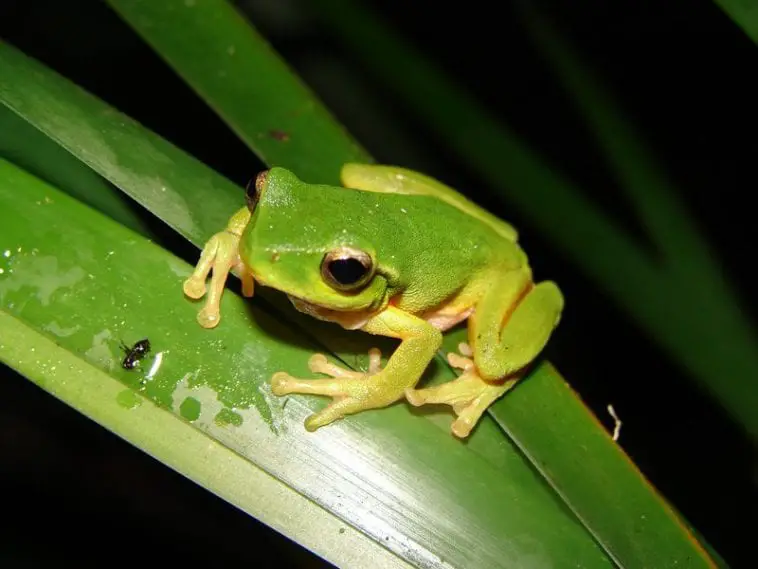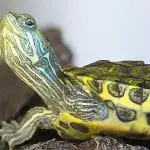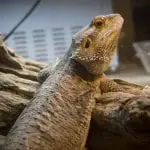A green tree frog is probably the most iconic type of frog there is. It’s green, like what we all thought frogs would be, and its smooth and small. These frogs are found in almost all habitats, but now it is very common in pet shops, and pet stores online and offline as loveable cute pets.
Why keep green tree frogs as pets?
Instead of the usual dog or cat, some families and individuals prefer a quiet, easy to care for, and non-fussy green tree frog. You can expect the following when you keep a green tree frog as a pet:
- Green tree frogs are easy to care for, and we’ll prove it with a care sheet for this animal in this post.
- Green tree frogs don’t need supplementary lighting or heating because these are nocturnal animals. You can say goodbye to costly electricity bills.
- Green tree frogs have minimal food or dietary requirements. They don’t require food that costs more than your food!
- Green tree frogs are handy; you can take it anywhere, even inside your pocket. As long as you know how to handle it safely, then it will feel confident in your hands.
- Green tree frogs don’t need regular potty breaks, house-proofing, training, or require a lot of affection and affirmation.
- Green tree frogs are beautiful and deserve to be placed in a healthy, well-kept terrarium.
- Green tree frogs are exotic creatures, and learning how to care for them prepares you for other more exotic pets.
- Green tree frogs can live for five years, even longer as long as you provide it with good nutrition, care, and attention it deserves.
- Green tree frogs are timid, and some may even refuse to be handled. But after safe and regular handling, you’ll be able to handle it without any worries.
An overview of a green tree frog
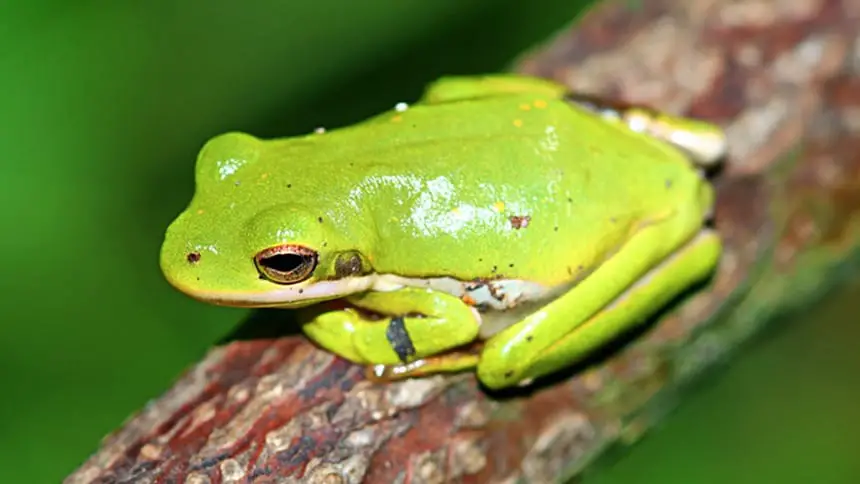
Now that you know why many pet owners are happy about having a pet green tree frog, it’s time to get to know this cute green frog better with an overview and a simple guide on how to care for it at home.
The green tree frog (Hyla cinerea) is a green frog with a stripe along the side of its head that extends down the flanks. This frog stays small and therefore is easy to adopt and to make good pets even for beginner pet owners. It can grow up to 2 ½ inches long and can live from 2 to 5 years and even longer in captivity.
Description
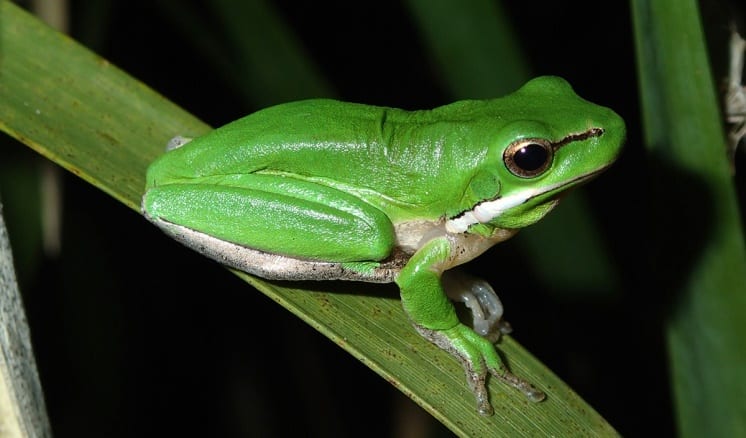
The green tree frog is a new world tree frog that belongs to the family Hylidae and is regarded as a common species of backyard frogs. In fact, it is so popular that it is the state amphibian in Georgia and Louisiana.
The green tree frog is green, and you will find all shades of green from yellow-olive to lime greens. It has been observed that the color of this frog can change depending on the tank lighting and even on the temperature of the environment.
You may also find small gold spots on the skin, while some may have white spots. Some green turtles come with pale-yellow, cream, or white lines from their jaws or the upper lips towards their groins. The skin of a green tree frog is smooth and sometimes glistening as if covered in well-oiled leather. The toes are largely owing to the large toe pads. The abdomen is white or pale yellow. You can identify the male by their wrinkled throats or vocal sacs and are slightly smaller compared to female green tree frogs.
Green tree frogs are found in the south and the central United States. These frogs prefer a habitat that has a lot of floating vegetation, cattails and grasses. You’ll find these in marshes, streams, small ponds, and even in large lakes. If you’re lucky, you can find a green tree frog floating in your swimming pool.
Housing a green tree frog
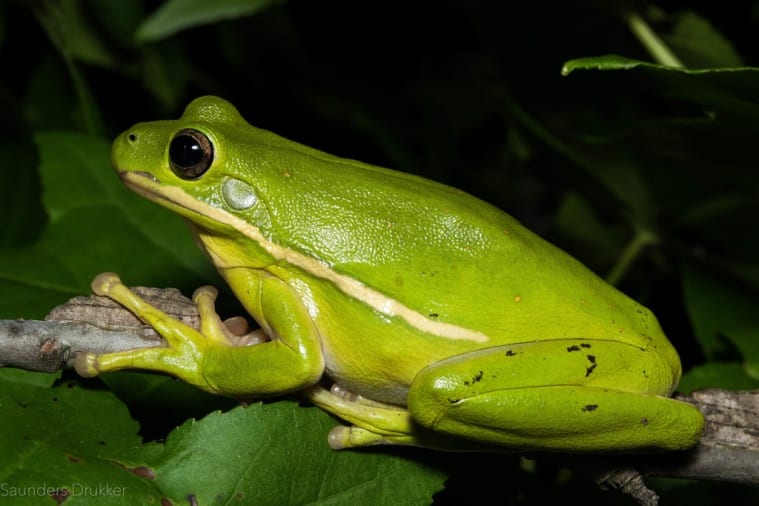
A green tree frog does not ask too much when it comes to housing. Since this is a small frog, you can use a 10-gallon tank as a cage or enclosure, but you may also use a larger one if you have one lying around. Take note that a green tree frog is arboreal, so these will usually stay on top of trees, tall plants, and branches. Therefore, a taller cage is better than a wider or larger cage. Also, a secure cover on top and the sides is very important since your green tree frog is quite a jumper. It can escape by climbing up the tall branch or plant and leap out of its cage.
Use live or artificial plants for climbing. For live plants, use philodendrons or ferns, which are not just perfect for green tree frogs but are also lovely to look at. If you must collect wood from your garden or yard, make sure that this wood is free from pesticides and should also be pest-free. If possible, treat natural wood before you place this inside the enclosure to make sure that this is free from bugs and harmful bacteria.
For the tank’s substrate, you may use soil with peat or vermiculite, cypress mulch, or smooth gravel. You must make sure that your pet won’t eat any substrate as he eats his food. Some pet owners line the floor of the tank with an indoor and outdoor carpeting material and afterward covered with cork bark or moss.
Compared to other frog species, the green tree frog does not need UVB or UVA lighting or heating. This is because this frog is nocturnal. But you can put a small, low-powered light to view your pet in its tank at night.
Food and diet
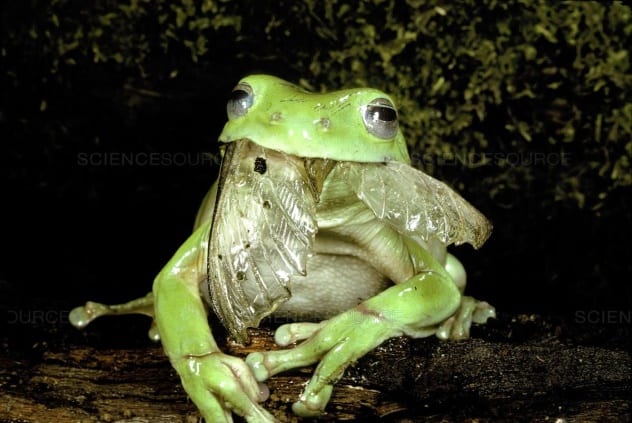
Green tree frogs have a voracious appetite and eat mainly insects day in and out. For captive frogs, crickets are their top choice. But you don’t just give insects as a meal; you must feed crickets with a nutritious meal before you give this to your pet.
Dusting with calcium supplements and multivitamins is done to make sure that your pet has a steady supply of calcium and other nutrients and prevent metabolic bone disease. Green tree frogs also eat fruit flies, moths, and many other insects if these are available.
Don’t just catch insects in your yard because these may contain chemicals and pesticides that can affect your pet. Buy insects at a local pet shop and don’t worry, these are very cheap.
How often do you feed a green tree frog? Tree frogs have a huge appetite during spring and summer compared to wintertime. Small or juvenile frogs must be fed daily, and larger adult ones can be fed every other day. Sometimes, pet owners may overlook this rule and feed their frogs as much as they want, and this usually leads to obesity. To control this, cut back on feeding and resist the urge to feed your cute pets.
Use a shallow and sturdy dish to place dechlorinated water in. The dish must be big but shallow because green tree frogs are not great swimmers. Place dechlorinated water in a mister and spray this inside the tank. Your pet can also lick water from the walls of the cage or water on the accessories to drink. Misting the tank also helps improve humidity levels inside the tank.
Common health problems
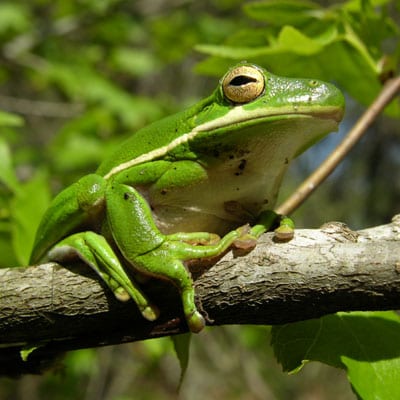
Green tree frogs are generally healthy but may also be vulnerable to common health conditions that affect amphibians. Green tree frogs can suffer from bacterial and fungal infections that affect the eyes and skin. If you see swelling, redness, or pus coming from the skin, then your pet may have an infection.
Frogs may also suffer from respiratory conditions, but not as common in other reptiles. This usually happens in frogs that are kept in humid or less humid environments. If your pet is drooling, with signs of wheezing and weakness, then this could be a respiratory problem.
Meanwhile, frogs that have poor appetites (you can tell by the presence of food discarded all over the cage!), but there are no other symptoms, your pet may have parasites. A trip to the vet who is familiar with conditions that affect amphibians would be better than a regular vet. It is recommended that your pet get a yearly test for parasites, and this is done through a fecal test or fecalysis. Include this test together with its yearly vet visit. A fecal exam will determine the presence of parasites and the overgrowth of these pests.
Ammonia poisoning is a common condition in captive pet amphibians like green tree frogs. This happens when the tank or the cage of the pet is not properly maintained. Feces and urine waste can accumulate in the tank, on the substrate, or on the accessories, and these release ammonia, which can poison your pet. To avoid this very dangerous condition, remove waste and clean the substrate regularly. Replace the substrate as necessary and don’t forget to improve airflow. Improve the lid cover by placing a screen on top.
Take your pet to the vet at the first sign of illness. If you have more than one tree frog in the enclosure, quarantine the sick frog until you are sure about its condition.
Captive care tips
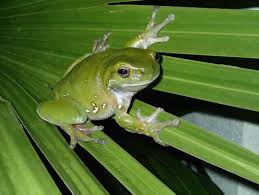
Do you know that you can hibernate your pet green tree frogs?
When the cold months arrive, you have two choices when it comes to caring for a green tree frog. You can let them be and just feed them through winter and use a good heat lamp in their enclosure, or you can hibernate them.
Yes, you can hibernate your pets because this is what these animals do when they are in the wild. Tree frogs hibernate to reduce their metabolic needs, especially since insects are usually scarce during the cold months. To do this, take these out of their regular tank and place in a separate aquarium with half-full of dead leaves. These leaves are from trees in your yard or a nearby forest.
Keep the dead leaves moist but not wet. When the frog feels that it is moist enough, it will hide under the pile and sleep. You can place a bowl of water on the floor of the enclosure to keep the tank humid. Your pet green tree frog can stay inside this enclosure for several months. Keep the tank temperatures from 45 to 50 degrees Fahrenheit but not freezing. If you let the temperature get higher than 60 degrees, then your pets will become active.
Around April, you can return your pets to the light and in their cage with warmer temperatures. After a week of rest, they will surely come up to feed. After hibernation, tree frogs will surely be very hungry and looking for food.
How to choose a green tree frog pet
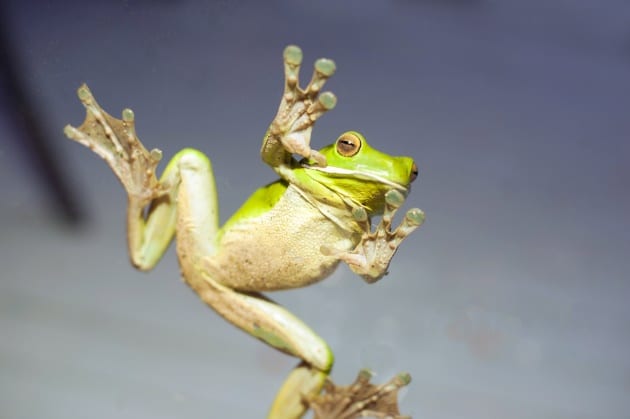
It’s easy to buy a green tree frog because of the internet, but as with all pets, it’s still better if you can see the animal first before you pay for it.
Frogs that live in the wild are facing tough declines in population and can become extinct soon because of unlawful human activities. Also, the illegal pet trade is causing frog species decline and extinction. Illegal trade is causing the spread of the chytrid fungus.
This is why you should never buy green tree frogs from black market traders. Purchase only from reputable suppliers and breeders. If you capture a wild frog and take it in as a pet, you will never know what type of diseases it has. Meanwhile, reputable breeders will sell you healthy and alert green tree frogs. Be sure to choose frogs that are alert, active, and have clear eyes. The skin should be free from scratches, cuts, and bumps. Ask the storekeeper to feed the frog and see if it eats well. Frogs that don’t eat are sick. If the frog is having problems with breathing, with the bloated abdomen, then these could be a sign of illness.

